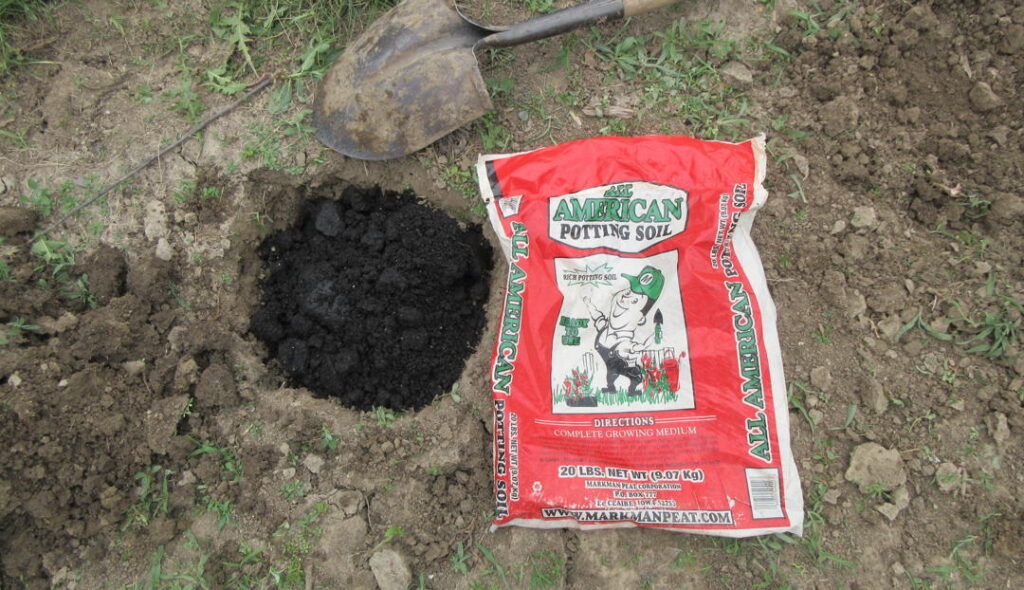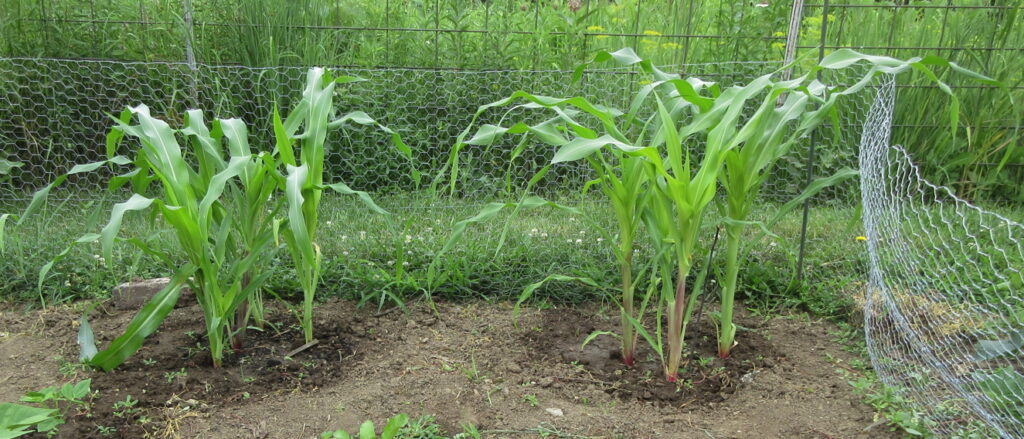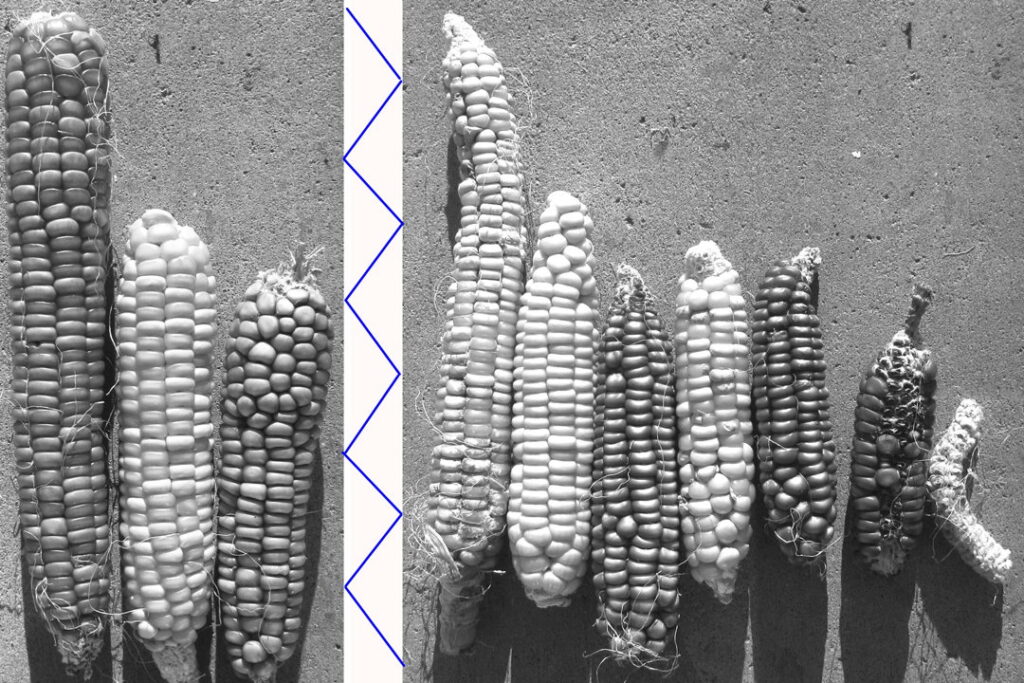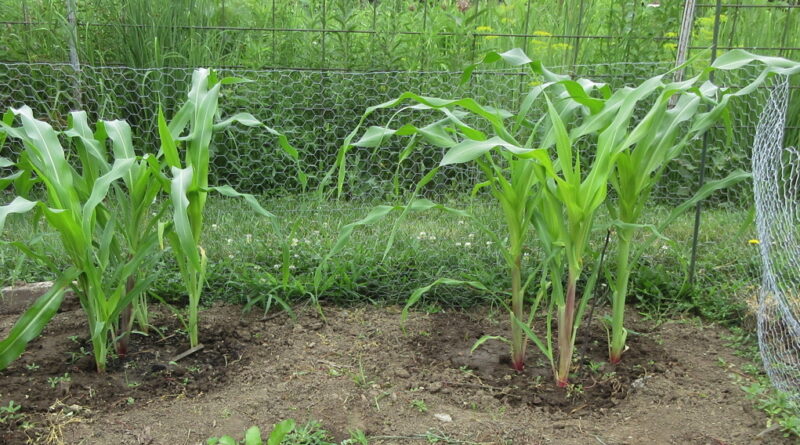Gardening in Pits
Wendy Munson-Scullin
(2019, Re-posted February 2023)
Several years ago I learned about shallow, pit-like features from the Terminal Late Woodland (AD 650-1150 ) at East St Louis, which were determined to have been gardens. This was interesting because the location was a clay soil, anything but ideal for growing corn. Clay soil is unyielding of water to plants in dry conditions and poorly-draining in wet conditions. Clay soils tend to bind nutrients strongly, making them less-available to plants.
Concept: Create a hole in poorly-permeable soil, fill it with a more-permeable, more organic-rich substrate, plant things in those holes.
Purpose: Water management, nutrient management, expand tillable land.
I found maize (corn) leaf phytoliths in the soil samples sent to me – phytoliths are silica inclusions in grass-leaves which are deposited in soil after plants die – and given that these features were buried, the maize that contributed them was likely grown in that same soil. As an aside – I spent a great deal of time questioning whether they should be identified as maize leaf phytoliths before turning in that report – because when extracted from plants, some common grasses native to North America produce an occasional phytolith form which overlaps with my admittedly restrictive allowance for diagnostic maize phytolith morphology. In the soil, you rarely find those forms under native prairie, but still – I’d rather be extra-careful about those identifications.
When this publication came out in 2019, I was studying humic acids (soil carbon fixation and transformation) in soils – with an eye for improving accuracy of phytolith analysis, among other things. Fresh in mind were issues about soil carbon and its complexity – and drought. Add to that, in 20 years of working with maize landraces – we had some questions about changes in our plants’ growth and yield that pointed to soil management. Because we have been studying ridged field agriculture in Wisconsin and Michigan and learning some of the intricacies of how people recreated the myriad functions of a natural system, the time was right to try it out!
Adapting clay soils in this way is done all over the world. Because water doesn’t soak into clay soils easily, it tends to flow over the surface during a heavy rain. If you create a depression and fill it with some more-absorbent soil, or organic matter or manure, the combination of absorbent soil-texture and depression will capture that water and retain the moisture. The enriched soil will be a better environment for plants. Gardening in clay soils in this manner is a way to expand food production into less easily worked soils, it’s also an ideal means of capturing rain in dry seasons or dry climates. Web-searchable names for this: “Zai pits” (West Africa) “waffle gardens” (Southwestern United States, Zuni).
While I didn’t have a substantial landscape to manipulate water on, this was a chance to observe the behavior of plants grown in such a hole. Using the dimensions from the site report, I dug a (roughly) 34 cm (14 inch) wide by 25 cm (10 inch) deep hole in dense, moderate shrinking-swelling Clay Loam and filled it with some carbon-rich topsoil. Then, 4 Great Plains Flour Corn seeds were planted in that seed bed, and next to it in the original Clay Loam soil.

Both sets of seeds germinated around the same time. From then on – the plants yielded surprise after surprise.
The plants in the “hole with good soil added” (HwGS) were shorter and more slender, deeper green and rigid (sturdy). The plants in the original soil were taller and paler green. The next difference that appeared was in tillering – those side-stalks or “suckers” that this landrace produces, which can bear flowers and a whole or partial ear of maize – a habit which has been bred out of modern field corn.

The plants in the HwGS had more tillers. The other had almost no tillers – it was growing up, not out. Note that Great Plains Flour is a landrace (open pollinated variety, not a hybrid) that is supposed to produce tillers and have a bushy growth habit. This is the ideal phenotype for this plant in good soil and in good weather conditions. Not all open pollinated maize landraces have that growth habit – some are single-stalked.
Starting from just the 6-8 leaf stage, the HwGS plants appeared to be thriving – bushy, with leaves close to the ground. Dark green (and some purple) leaves and stalks with stiff-but-flexible leaves. Compact tassles with abundant pollen. The other plants grew tall and with fewer stems.
The final yield difference was a bit frustrated – there was “popped kernel” damage the large ear of the HwGS plants, which makes the ear lighter and is caused by intense rainfall or periods of drying out (we had both). So the yield difference between sets of plants was only about 6.85% greater in the HwGS plants. But there was almost a full ear for each individual plant, and one expects each plant to bear a single ear (at a minimum) in a garden with good soil. Had it gone in the ground a few weeks earlier, these ears would have looked better. Humor me, just count the ears, it was a last-minute project. This is a flint-type, 8-row corn.

Left: Plants in original soil: 77.9 g per plant.
Right: HwGS plants: 83.625 g per plant.
This doesn’t look like a lot when field corn yields of 180 bushels per acre or more are the norm in Iowa. Before modern hybrid corn and inorganic fertilizers (i.e. before the 1940s), corn yields of 30 bushels per acre were average yields. There was heat stress and a long dry period when this trial occurred. Excuses, excuses – real life rarely lines up with experimental designs.
Good soil changes plant growth for the better – you don’t even have to wait until the end of the season – the feedback in the first few weeks shows that the plants are loving this.
Based on this result, even that small amount of carbon-rich soil added to a dense-clay soil is tremendously beneficial. Though that is just part of what this system is designed to achieve.
A final note: I feel bad labeling that “good soil.” There can be phenomenal plant communities on any kind of soil. People who did this took their cues from nature (using organic-rich soils or mulches or additives). But they also modified nature to expand gardening-space and trap water in the gardens / fields where they needed it. Keeping water in the soil is critical. Drought-resistance can be as big-picture a practice as we can imagine.

